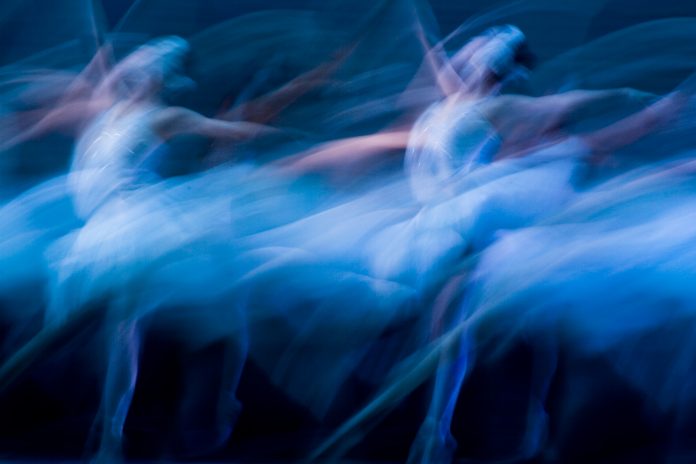Dr Deborah Lee, Dr Fox Online Pharmacy, discusses the benefits of dancing on your general health
If you want to stay healthy and live a long life – why not get up and dance! Dancing is such a fantastic form of exercise. It has so many benefits. Surely last year’s Strictly was enough to get you motivated, but if not, read on and find out why donning those dance shoes may well be the secret of eternal youth.
What is dancing?
An exercise
Dance is a rhythmical form of exercise, where you dance a set pattern of steps in time with the music. When you dance, this allows you to release emotions and express feelings. Dancing involves concentration, and stamina, meaning when you dance, you switch off from the stresses of everyday life. Hence dancing lowers stress and anxiety. Dancing exercises the heart, lungs, muscles, joints, and ligaments, and in doing so it tests your balance, muscle strength, and coordination. But more than that – dancing also requires cognitive skills and memory.
Better for you than an exercise bike!
Dancing, therefore, is not just sitting on an exercise bike pedalling or running on a treadmill. It calls on all your different muscle groups. As you vary your speed and dance different dances to different timings, you speed up, slow down, execute turns, stretches and poses – you have to learn to control your movement – and all of this has so many advantages for the ageing body.
Social interaction with other human beings
One of the other key aspects is that dance lessons are sociable. When you attend a dance class or go to a dance, you engage with other human beings. Making connections with others is vitally important for human health. Social interactions combat loneliness, which is as big a risk to health as smoking 15 cigarettes per day. Moreover, dancing involves touching other people – being in hold and being spun around – and physical touch is another hugely important factor for our health.
Makes you happy!
Dancing raises levels of the happy hormone, serotonin, and helps lower stress. This is a major health benefit in view of the incredible stresses we live under today.
Who can benefit from dancing?
Dancing is a fabulous exercise for everyone, of any age, even if they have a disease or a disability. Some of the medical evidence is summarised below –
Dancing is for everyone
Dancing has benefits for all ages – children, young people, adults and older adults. In a 2021 umbrella review in the Journal Plos One, the authors analysed 33 systematic reviews, 9 epidemiological, and 87 descriptive studies on the health benefits of arts engagement. 30-60 minutes per week of regular participation was linked to health benefits. The greatest improvements were seen with Ballroom and social dancing, aerobic dancing and Zumba
Dancing post menopause
A 2021 study in the journal Menopause followed up 36 postmenopausal women, average age 57, who participated in 90 minutes of dancing three times a week for 16 weeks. At the end of the study, there were significant improvements in coordination, agility and aerobic ability, with improvements in the General Fitness Function Index (GFFI). Cholesterol levels were also significantly improved, with lower triglycerides and higher HDL cholesterol levels.
Dance for older people
Studies support the fact dancing is good for physical and mental health. A 2009 review in the Journal of Ageing and Physical Activity, included 15 training and 3 cross-sectional studies. The authors concluded there was substantial medical evidence that dancing can significantly improve aerobic power, lower body muscle endurance, strength and flexibility, balance, agility and gait. They also found some evidence that dancing can improve bone mineral density, and muscle power, as well as reducing falls, and cardiovascular disease risk.
Dancing can be undertaken by most older people and their carers. You can dance despite having medical conditions such as Parkinson’s Disease, dementia, arthritis and heart disease. Disabled people in wheelchairs can also participate in dancing.
In 2005 McKinley and colleagues published a paper on a group of frail elderly with Parkinson’s Disease. They had been randomly allocated to one of two groups – one group learning Argentine Tango, or the other group who were walking, as a form of exercise. Both groups showed improvement in a timed ‘sit to stand’ test, but the Argentine Tango group had the greatest improvements in balance and walking speed.
Another study in patients with Parkinson’s Disease showed that those attending a twice a week, Tango Couse, for 10 weeks, resulted in greater improvements in balance than those in a traditional exercise group. Interestingly, the Tango Group were enthusiastic and wanted to continue dancing, and many of the exercise group wanted to join the dance class!
In another study, participants were assigned to either a Foxtrot, Waltz, Tango, Tai Chi or no intervention class. All of these groups showed improvements in balance, but the largest improvements were in the dance classes. Of note, all interventions led to improvements in backwards walking and greater backward stride length, however, the biggest improvements seen overall were in the Tango class.
One of the key points about learning the Tango is that the student focuses on walking. When you are consciously concentrating on walking in the dance class, this may well help you to walk subconsciously, outside the dance class. Dancing relies on a range of cues – auditory, visual and somatic – that bypass the midbrain ganglia. This means the brain supplies motor signals to the dance muscles via alternative pathways and makes new neuronal connections.
Dancing also involves multitasking, due to the need to perform dance steps in time to the music, while navigating the dance floor. People with Parkinson’s Disease often have difficulty doing more than one thing at once, so dancing may have specific benefits for this type of brain dysfunction.
Dancing after breast cancer
In a 2012 systematic review of all the relevant publications on dance therapy for those with systemic diseases, dancing was shown to have a positive impact on those who had been treated for breast cancer, leading to improvements in the quality of life, and improved shoulder movements and body image. Dance therapy was also associated with lower levels of depression.
Dancing for adults with autism
Studies suggest that dancing for people with autism also has major benefits. A 2020 review examined 9,350 studies, but only 5 were suitable for inclusion. These studies showed that dancing can improve the negative symptoms of autism such as empathy, body awareness and other aspects of behaviour that affect social engagement.
Final thoughts
If you are looking for something new to make 2022 a great year – why not take up dancing? There are so many benefits – from the physical benefits to the social aspects – seeing others, making new friends, and stopping feeling lonely.
Before you say you have two left feet, let me say it doesn’t matter! If dancing was easy all the dance teachers would be out of a job! It doesn’t matter how good you are, it just matters how much you enjoy it. Why not take the very first step and contact your local dance school today! And what’s more – you don’t necessarily need a partner either!
For more information
- NHS – Dance for fitness












I agree that enrolling your kids in dance classes can really help their social and physical skills. I’d like to let my daughter try these sorts of activities since she has not had the opportunity of going out for months in this lockdown. I wonder if there are already open studios near us.
I like that you mentioned how dancing could raise the levels of serotonin and help in lowering stress. It looks like my younger sister got a bit interested in dancing and wants to learn how to do it. There are dance studios that teach jazz classes so I think she should pick one of those.
I completely agree with this article. I have been dancing since I was 4 years old. I’m 54 now. It is a gift we all possess that no one can take away from us! It doesn’t matter what you feel your limits are. You will find yourself exceeding these and improving your overall health mentally and physically! It is yours! For those that are on the shy side of dancing, well just start and you will find others wanting to join. I and my boyfriend would go around the festivals getting others especially older people to get up and dance and they loved it, it was so rewarding seeing them smile and enjoy themselves no matter of their limitations at the time they were living! Its spiritual and I don’t believe there is one human that doesn’t have the urge to dance. Its a gift! A gift when it is shared is beautiful! Look at a child when they dance they are always happy. look an adult when they are dancing they too are happy! Live it Love it and Dance! Its universal!
Tya Hansen